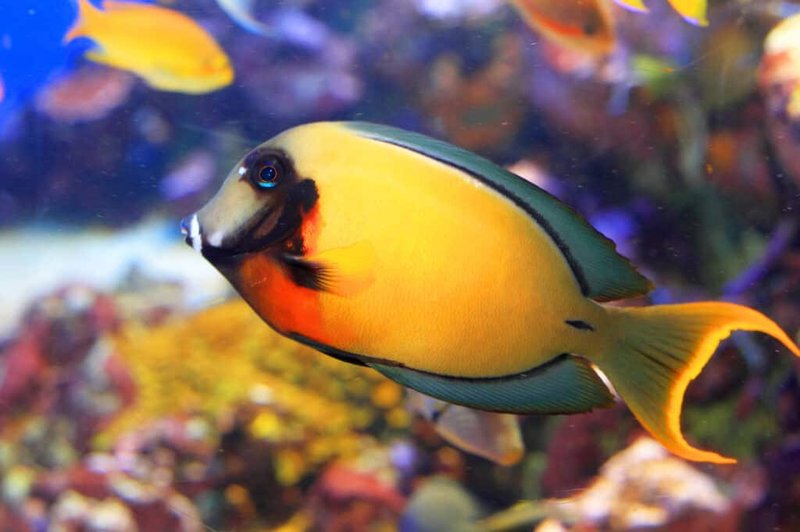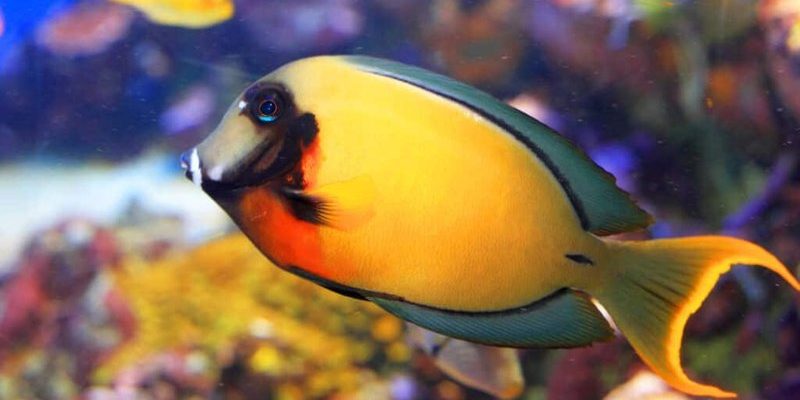
Tangs belong to the family Acanthuridae and are often recognized for their unique shape and striking colors. They’re like the partygoers of the fish world, always bringing energy and vibrancy to their surroundings. Whether you’re a marine enthusiast or just curious about these underwater beauties, there’s a lot to learn. So, grab a seat and enjoy as we explore the top ten facts about Tang fish that will make you appreciate them even more.
1. Vibrant Colors and Unique Shapes
One of the most captivating aspects of Tang fish is their stunning range of colors. You’ll find species like the blue tang, which is a brilliant shade of cobalt blue, and the yellow tang, with its bright lemon-like hue. These colors aren’t just for show; they serve vital purposes. The brightness can help attract mates and act as a warning to predators. Imagine walking into a room full of dull colors, and then, bam! A flash of vibrant yellow lights up the space. That’s what tangs do in the ocean!
Their bodies are also quite unique. They have a flat, oval shape that allows them to maneuver gracefully through tight coral spaces. It’s like watching a dancer glide through a crowded ballroom. This shape helps them evade predators and navigate their lush underwater homes. When you see a Tang fish in action, it’s hard not to be mesmerized by their elegant swimming style.
2. Herbivorous Diet: The Sea Vegetable Lovers
Tangs are primarily herbivores, which means they feast on a diet abundant in algae. They’re like the lawnmowers of the ocean, keeping algae growth in check on coral reefs. This is crucial because excessive algae can smother coral and disrupt the entire ecosystem. By eating this algae, Tang fish play a vital role in maintaining the health of their habitat.
Their specialized teeth, which resemble a comb, help them scrape algae off rocks and coral. You might picture them like little gardeners, pruning their underwater “lawn.” This diet is essential for their health too, as it provides the nutrients they need to thrive. So, the next time you see a Tang fish, think of them as the unsung heroes of the ocean, maintaining balance in their watery world.
3. The Social Butterflies of the Reef
If you think about Tang fish, imagine a lively group of friends at a cafe, always interacting and socializing. Tangs are known for their friendly nature. They often swim in groups or schools, which helps provide safety in numbers. Being social creatures, they engage in playful behavior and can often be seen darting around each other in a lively dance.
Interestingly, Tang fish also have a bit of a pecking order. In these schools, you’ll find dominant individuals that lead the group, while others are more submissive. This social structure is vital for their survival, helping them avoid predators and find food more efficiently. It’s a fascinating dynamic, showing how even in the animal kingdom, relationships matter!
4. They Have a Spiny Defense Mechanism
Here’s the thing: while Tangs are social and friendly, they’re not without their defenses. Each Tang fish has a sharp spine, or *scalpel*, on each side of its tail. When threatened, they can use these spines to fend off predators, much like a knight using a sword. It’s a clever way to protect themselves without needing to flee.
If you ever want to observe this in action, watch how they behave when they feel threatened. They’ll puff up slightly and position themselves to showcase their spines. It’s a warning sign to predators: “Back off, or you’ll regret it!” This defense mechanism is essential for their survival in the wild, where danger can lurk around every coral.
5. Breeding and Parenting Strategies
You might wonder how Tang fish reproduce and care for their young. Interestingly, most Tang species practice what’s called *broadcast spawning*. This means that during the breeding season, they release eggs and sperm into the water at the same time. It’s a bit chaotic, creating a beautiful cloud of new life in the ocean!
Once fertilized, the eggs float away, and the parents don’t stick around to care for them. It’s a “survival of the fittest” method, where a few of the tiny hatchlings will hopefully survive. While this might seem harsh, it’s nature’s way of ensuring that at least some offspring will make it to adulthood. This strategy allows Tangs to produce many young, increasing their chances of species survival.
6. Their Habitat: The Coral Reef Ecosystem
Tangs are typically found in warm, shallow waters, especially around coral reefs. Think of coral reefs as the bustling cities of the marine environment—full of life, color, and activity. These reefs provide essential shelter for Tangs and a rich source of food. Without these ecosystems, Tangs would struggle to survive.
The reef environment is also fascinating. It’s home to a myriad of other species, making it a dynamic place for Tangs to interact with different marine life. Just like a neighborhood park buzzing with activity, coral reefs are vibrant hotspots of biodiversity. This is part of what makes Tangs so interesting; they’re not only beautiful but also play a critical role in these lively ecosystems.
7. Tangs in Aquariums: Care and Challenges
Keeping Tang fish in an aquarium is a popular choice among marine enthusiasts. Their colors and behavior make them great additions! However, they do require specific care to thrive in captivity. You might be wondering about the size of the tank and water conditions.
Tangs need plenty of space to swim, so a larger tank is essential. Additionally, they prefer clean, well-filtered water with stable temperatures. Algae growth can be managed in aquariums, but it’s crucial to provide them with plenty of plant-based foods. Think of it as creating the perfect home for a vibrant pet—they need the right environment to feel happy and healthy.
However, maintaining a Tang fish aquarium can come with challenges. They can be territorial with other similar species, so it’s essential to choose tank mates wisely. It’s like organizing a party where you need to ensure everyone gets along!
8. Conservation Status and Threats
Despite their vibrant presence in the ocean, many Tang species face threats due to overfishing, habitat loss, and the effects of climate change. Some species, like the beloved blue tang, are increasingly sought after for aquariums, leading to unsustainable fishing practices. This can upset the delicate balance of their ecosystems.
It’s important to support conservation efforts aimed at protecting coral reefs and the species that inhabit them. By taking steps to reduce pollution and support sustainable fishing, we can help ensure that future generations will enjoy the beauty of Tang fish in the wild. Just like you’d want to protect your favorite neighborhood hangout, protecting their homes is crucial for their survival.
9. The Role of Tangs in Marine Ecosystems
Tangs are more than just colorful fish; they play a vital role in their ecosystems. Their herbivorous diet helps control algae populations, which can otherwise overwhelm coral reefs. By keeping these algae in check, they contribute significantly to the health of their marine environment. It’s kind of like how you might keep your garden tidy to help your plants thrive.
Additionally, their social behaviors help maintain community dynamics within the reef. They interact with other fish species, contributing to the overall biodiversity of their habitats. Think of them as active participants in a bustling community, where every citizen plays a part in keeping things balanced and thriving.
10. Fun Facts About Tang Fish
Let’s wrap up with some fun tidbits that make Tang fish even more interesting:
- Color Change: Some Tangs can change color based on their mood or environment.
- Long Lifespan: While many Tangs can live up to 5-10 years in the wild, some can live even longer in well-cared-for aquariums.
- Unique Communication: Tangs communicate through body language and movements, making their interactions quite dynamic.
- Popular Culture: Thanks to Dory from *Finding Nemo*, the blue tang has gained popularity, prompting many to learn about their care.
In conclusion, Tang fish are not just a pretty sight but vital players in the marine ecosystem. Their vibrant colors, social behavior, and unique adaptations make them a captivating subject for anyone interested in marine life. Whether in the ocean or an aquarium, these fish show just how beautiful and essential underwater life can be. So next time you see a Tang fish, remember the wonders they represent and the roles they play in the vibrant tapestry of the ocean.

